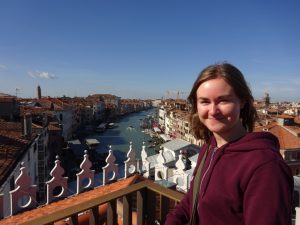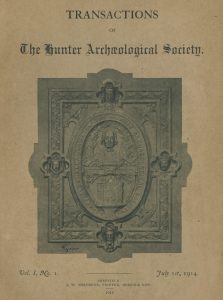January 11, 2024, by Matt Davies
Introducing Abigail Spanner and the Hunter Archaeological Society Project
As the new Research Associate at the Digital Transformations Hub, I thought I should introduce myself. My name is Abigail Spanner, and I am a Classics PhD student in my second year studying visuality and visual impairments in Quintus Smyrnaeus’ Posthomerica, a 3rd-century AD epic poem which bridges the narrative gap between the Iliad and Odyssey. I am thoroughly enjoying my new role in the DTH and I’m learning a lot about the equipment, software and support available to staff/students in the Faculty of Arts.
We’ve had a successful first term implementing a new DTH Volunteer project and I’m looking forward to getting further involved in the new year. The volunteers are also keen to see how much project work we can get completed before the end of the academic year.
Now, I’d like to tell you a bit more about the project…
The Hunter Archaeological Society (HAS) Digitisation Project
On the surface, scanning journals and converting them into PDFs might seem a simple task but imagine an entire collection of journals dating from 1914 which need to be digitally captured to a professional archive standard, and also have searchable versions created using Optical Character Recognition (OCR)! Welcome to our latest project at the Digital Transformations Hub.
The HAS journals primarily cover archaeological excavations, sites, buildings and artefacts from Derbyshire and South Yorkshire, especially the Sheffield and Peak District areas. These documents have particular local and regional interest, and were originally available only as physical copies posted to registered members of the the HAS. In 2024, times have changed and digital copies of will not only make these documents more widely available (with plans to make the PDFs freely accessible) but also ensure that the earliest and rarest publications from the 1910s do not vanish into oblivion, tucked away in attics and eaten away by moths and silverfish.
Dr Anna Bloxam is a lecturer in the Classics and Archaeology department here at Nottingham and, as a HAS Trustee, the leading academic on the project. I have been helping Anna to develop the workflow and supervise the student volunteer team working on the project. The volunteer team are: Archie Sloan, Daniel Lake, Jessica Smith, Amy Gallagher and Melissa Campbell-Oulton.
The team use the DTH’s Epson Expression 10000XL A3 scanners to digitise copies of the journals, but there’s a lot more to it than that! First, we have to capture the metadata; the technical and descriptive information about each article. The team go through each article recording the name of the author, title, page numbers, historical periods, and other important information, all of which is recorded in an Excel spreadsheet. Once that’s done, we take scans of the individual articles- you can’t just scan the entire journal in one go, otherwise the published information will be difficult to categorise and we want to make the final product as user-friendly as possible (think of how JSTOR organises academic journals). Scans are initially saved as TIFFs which are a non-lossy high-quality format, and the standard digital image format for archiving.

Student volunteer Jessica Smith works on the Hunter Archaeology Society digitisation project in the DTH.
Once the TIFF is saved and archived away safely, a copy is created and saved as a JPEG -a much smaller and easirer to use digital file type – which is adjusted as required in Photoshop, before being turned into a PDF. Now here comes the even more exciting part! We put the PDFs through the OCR (Optical Character Recognition) software on Adobe Acrobat Pro* which makes it machine readable and searchable. So words and phrases can be searched within the text, or-for instance – a black of text could be ‘cut and pasted’ into a new document. Our volunteers then carefully go through each PDF comparing them to the original text and correct any errors which the OCR software has made – sometimes unusual fonts or damage to the document can confuse the OCR software leading to some interesting interpretations!
By the end of the project, we hope to have created a complete digital archive, allowing the HAS to make the journals available to the academic and amateur archaeological community.
P.S: Amateur comes from the Latin word ‘amare’ meaning ‘to love’, that is, the best way to define amateur is not someone who doesn’t know what they’re doing/not an expert but simply someone who does a ‘labour of love’.
*all of the DTH’s PCs have Adobe’s Creative Cloud education package on, so programmes including; Acrobat, Photoshop, InDesign and Final Cut, are freely available to all FoA staff and students in the DTH.
The Hunter Archaeological Society website
No comments yet, fill out a comment to be the first



Leave a Reply